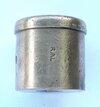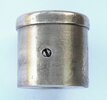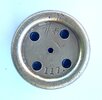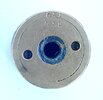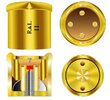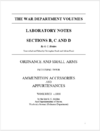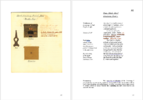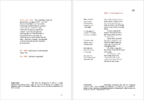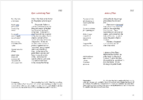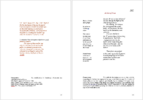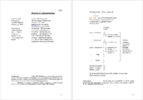Armstrong pattern "C" Percussion Fuze Mk1 for rifled breech-loaders.
This is the Dyer's version with internal parts designed by Major Dyer. Approved in September 1864.
The fuze had a detonator near the top suspended by two screw pins. It differed from other patterns being cast as one piece and closed by a screwed base with 2 wrench holes.
On discharge the inertia pellet sheared the copper pins and on graze, its momentum carried it forward and fired it against the needle point fixed in the fuze top.
It was designed to sit under the Armstrong time fuze or the shell plug to attain either a combined time & percussion or plain percussion action.
4 holes at the top sealed by a thin brass disc that ruptured if the time fuze detonated above, passing the flame through to the pellet of the percussion fuze and then onto the main shell charge.
Stamped: 7/65 and 117. R^L on the side. O 31 on the base.
This is the Dyer's version with internal parts designed by Major Dyer. Approved in September 1864.
The fuze had a detonator near the top suspended by two screw pins. It differed from other patterns being cast as one piece and closed by a screwed base with 2 wrench holes.
On discharge the inertia pellet sheared the copper pins and on graze, its momentum carried it forward and fired it against the needle point fixed in the fuze top.
It was designed to sit under the Armstrong time fuze or the shell plug to attain either a combined time & percussion or plain percussion action.
4 holes at the top sealed by a thin brass disc that ruptured if the time fuze detonated above, passing the flame through to the pellet of the percussion fuze and then onto the main shell charge.
Stamped: 7/65 and 117. R^L on the side. O 31 on the base.

